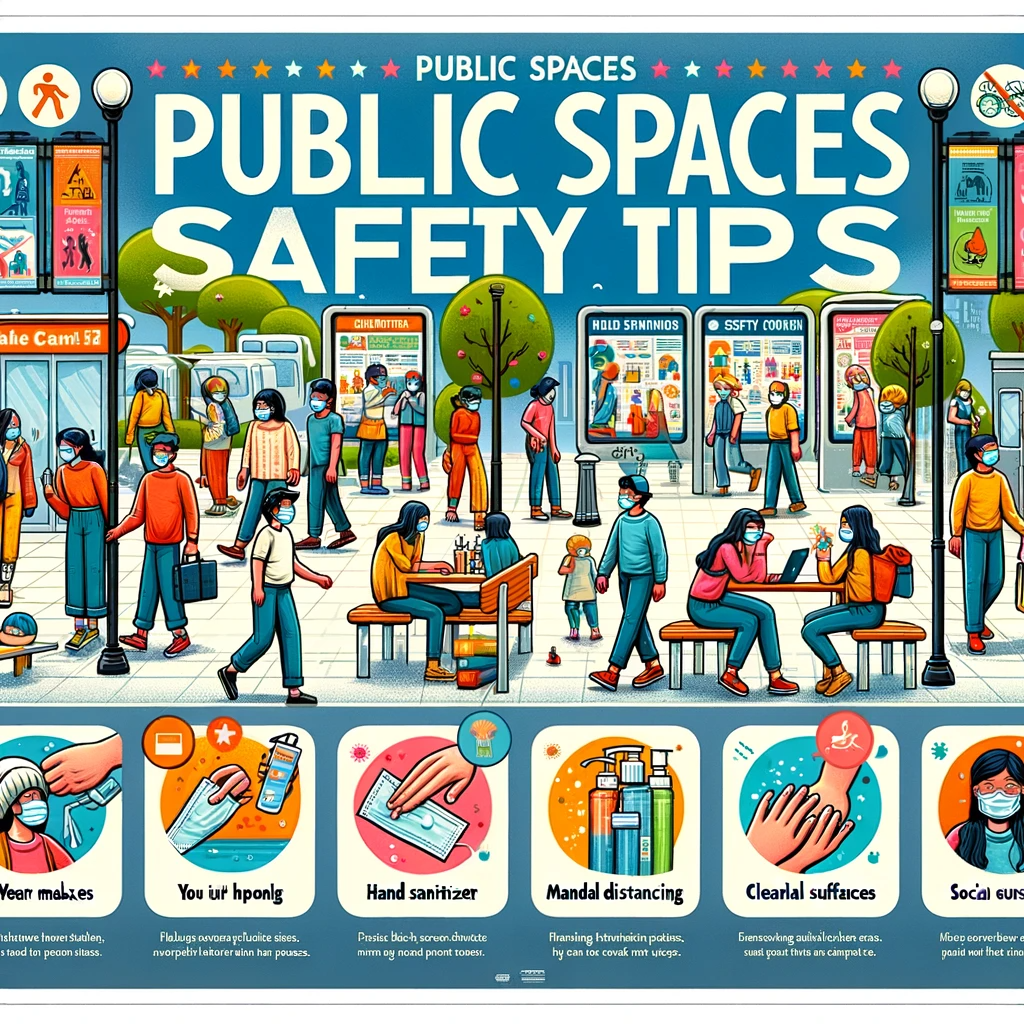In today’s increasingly interconnected and diverse world, the concept of cultural hygiene practices has emerged as a vital framework for fostering harmonious coexistence, promoting inclusivity, and preventing conflicts rooted in cultural differences. Much like personal hygiene is essential for individual well-being, cultural hygiene practices serve as the foundation for healthier and more vibrant communities, workplaces, and nations. This comprehensive guide explores the multifaceted realm of cultural hygiene, shedding light on its significance, key practices, implementation in everyday life, measurement and assessment, common pitfalls to avoid, and avenues for continuous improvement and innovation. By delving into these aspects, we aim to provide a holistic understanding of cultural hygiene practices and empower individuals and communities to actively embrace and promote a culturally hygienic way of life.
| Cultural Hygiene Tips | Description |
|---|---|
| 1. Respect Diversity | Embrace and value differences in culture and beliefs. |
| 2. Active Listening | Listen attentively to understand diverse viewpoints. |
| 3. Communicate Respectfully | Speak and interact with sensitivity and respect. |
| 4. Educate Yourself | Learn about different cultures and their customs. |
| 5. Promote Inclusivity | Advocate for equal opportunities for all. |
| 6. Develop Conflict Resolution | Resolve cultural disputes through peaceful means. |
| 7. Measure and Assess | Use surveys and feedback to gauge cultural climate. |
| 8. Avoid Stereotyping | Refrain from making assumptions based on culture. |
| 9. Embrace Innovation | Explore technology and programs to enhance cultural understanding. |
| 10. Engage Youth | Involve young people in cultural hygiene initiatives. |
Cultural Hygiene Practices
In our interconnected world, cultural diversity is a defining characteristic of society. People from various backgrounds, ethnicities, religions, and belief systems coexist in the same communities, workplaces, and nations. While this diversity enriches our lives, it also brings challenges related to cultural understanding, tolerance, and harmony. This is where the concept of cultural hygiene practices comes into play.
The Significance of Cultural Hygiene
Cultural Hygiene: The Foundation of Harmonious Coexistence
Cultural hygiene is not just an abstract idea; it’s a set of principles and practices that underpin the smooth functioning of societies. Just as personal hygiene is essential for individual health, cultural hygiene is vital for the health and well-being of our communities. Here’s why it’s significant:
- Conflict Prevention: Cultural hygiene practices help prevent misunderstandings and conflicts rooted in cultural differences. By fostering respect and tolerance, they pave the way for peaceful coexistence.
- Inclusivity and Diversity: Cultural hygiene encourages inclusivity by recognizing the value of diversity. It promotes the idea that everyone has a place and a voice in society, regardless of their cultural background.
- Social Progress: Societies that prioritize cultural hygiene tend to be more open to change and innovation. They are better equipped to adapt to the challenges of a rapidly evolving world.
Key Cultural Hygiene Practices
Building Blocks of Cultural Hygiene
Cultural hygiene practices encompass a range of behaviors and attitudes that contribute to a harmonious and inclusive society. Here are some key practices:
- Respect for Diversity: Acknowledging and appreciating cultural differences without prejudice or bias.
- Effective Communication: Promoting open and honest dialogue to bridge cultural gaps and resolve conflicts.
- Cultural Awareness and Education: Providing opportunities for individuals to learn about and understand different cultures.
- Inclusivity in Decision-Making: Ensuring that decision-making processes reflect the diverse voices and perspectives within a society.
- Promoting Equality: Striving for equal rights, opportunities, and treatment for all, regardless of cultural background.
- Conflict Resolution: Developing mechanisms to peacefully address and resolve cultural disputes.
The Impact of Cultural Hygiene on Society
Harmony, Progress, and Resilience
Cultural hygiene practices have a profound impact on society, affecting various aspects of our lives. Let’s explore these impacts:
- Social Cohesion: Cultures that prioritize cultural hygiene tend to have stronger social bonds and a greater sense of belonging among their members.
- Economic Prosperity: By fostering collaboration and diversity of thought, cultural hygiene contributes to economic growth and innovation.
- Global Relations: Cultural hygiene practices can improve international relations by promoting understanding and diplomacy between nations.
- Mental and Emotional Well-Being: A culturally hygienic environment reduces the stress and anxiety caused by discrimination and cultural conflicts.
Implementing Cultural Hygiene in Everyday Life
Turning Principles into Actions
Cultural hygiene isn’t confined to academic discussions or policy-making; it’s a concept that can and should be implemented in our daily lives. Here’s how you can put cultural hygiene practices into action:
- Self-awareness: Start by examining your own biases and prejudices. Be conscious of your reactions to people from different cultural backgrounds and strive to be more open-minded.
- Active Listening: When engaging with individuals from diverse backgrounds, listen actively and empathetically. Try to understand their perspectives without judgment.
- Respectful Communication: Communicate with respect and sensitivity. Avoid making assumptions or offensive remarks about someone’s culture or beliefs.
- Educate Yourself: Take the initiative to learn about other cultures. Read books, watch documentaries, or attend cultural events to broaden your knowledge.
- Promote Inclusivity: Encourage inclusivity in your social circles, workplace, or community by advocating for equal opportunities and representation for everyone.
- Conflict Resolution Skills: Develop conflict resolution skills that prioritize peaceful and respectful solutions when cultural disagreements arise.
Measuring and Assessing Cultural Hygiene
Tracking Progress and Identifying Areas for Improvement
Measuring and assessing cultural hygiene practices is essential for ensuring their effectiveness. Here are some methods and tools to help evaluate cultural hygiene:
- Surveys and Feedback: Conduct surveys or gather feedback from individuals within a community or organization to gauge their perception of cultural hygiene.
- Incident Reports: Keep records of cultural incidents or conflicts and analyze them to identify recurring issues.
- Diversity Metrics: Track diversity metrics, such as the representation of different cultural groups in leadership roles, to measure progress.
- Training Evaluation: Assess the impact of cultural sensitivity training programs by examining changes in attitudes and behaviors among participants.
- Social Climate Surveys: Use social climate surveys to gauge the overall cultural climate and identify areas of concern or improvement.
Common Mistakes to Avoid
Pitfalls in Cultivating Cultural Hygiene
In our efforts to promote cultural hygiene, it’s crucial to be aware of common mistakes that can hinder progress. These include:
- Ignoring Cultural Differences: Failing to recognize and appreciate the uniqueness of different cultures can lead to misunderstanding and conflict.
- Stereotyping: Making broad generalizations about individuals based on their cultural backgrounds is both unfair and counterproductive.
- Exclusion: Excluding certain cultural groups from decision-making processes or social activities can perpetuate inequalities.
- Inaction: Neglecting to address cultural conflicts or incidents when they arise can allow tensions to escalate.
- Lack of Education: Failing to provide educational resources and training on cultural sensitivity leaves individuals ill-equipped to navigate cultural differences.
Cultural Hygiene Improvements and Innovations
Enhancing the Cultural Hygiene Toolkit
The journey to fostering a culturally hygienic society is an ongoing one, and there is always room for improvement and innovation. Here are some ways in which cultural hygiene can be enhanced:
- Technology and Communication: Leverage technology to facilitate cross-cultural communication and understanding, such as translation apps and cultural exchange platforms.
- Community Programs: Develop community programs that promote cultural exchange, tolerance, and awareness through events, workshops, and festivals.
- Inclusive Policies: Advocate for policies and initiatives that promote inclusivity and diversity at the workplace and in educational institutions.
- Cultural Ambassadors: Appoint cultural ambassadors or representatives within organizations to bridge cultural gaps and promote intercultural understanding.
- Youth Engagement: Engage young people in cultural hygiene initiatives to instill these values from an early age.
Final Thoughts:
In the journey through the various facets of cultural hygiene practices, we have uncovered a profound truth: the significance of fostering respect, inclusivity, and effective communication transcends mere theory and policy. It permeates our daily lives, workplaces, and communities, influencing the very fabric of our societies. As we conclude this comprehensive guide, it is evident that cultural hygiene is not a lofty ideal but a practical and achievable goal—one that each of us can contribute to.
The significance of cultural hygiene in preventing conflicts, promoting diversity, and bolstering social progress cannot be overstated. It is the cornerstone upon which harmonious coexistence is built, enabling us to navigate the complexities of our culturally diverse world with grace and empathy.
Implementing cultural hygiene practices in our everyday lives, measuring and assessing our progress, avoiding common mistakes, and embracing innovations are all vital steps in this ongoing journey toward a more inclusive and harmonious society. By recognizing the value of cultural diversity and fostering cultural hygiene, we can shape a future where our differences are celebrated, conflicts are resolved peacefully, and progress is driven by the rich tapestry of human experience. Together, we can create a world that thrives on unity in diversity, where cultural hygiene becomes a way of life—a testament to our shared commitment to a brighter, more inclusive future for all.
FAQs:
1. What are cultural hygiene practices?
Cultural hygiene practices are a set of principles, behaviors, and attitudes that promote respect, inclusivity, and effective communication among individuals and groups from diverse cultural backgrounds. They aim to prevent conflicts and misunderstandings rooted in cultural differences.
2. Why are cultural hygiene practices important?
Cultural hygiene practices are essential for fostering harmonious coexistence in our diverse world. They help prevent conflicts, promote diversity, and contribute to social progress by creating inclusive environments where everyone’s voice is heard and respected.
3. What are some key cultural hygiene practices?
Key cultural hygiene practices include respecting diversity, effective communication, cultural awareness and education, inclusivity in decision-making, promoting equality, and conflict resolution through peaceful means.
4. How can I implement cultural hygiene in my everyday life?
You can implement cultural hygiene by practicing self-awareness, actively listening to others, communicating respectfully, educating yourself about different cultures, promoting inclusivity, and developing conflict resolution skills.
5. How can cultural hygiene be measured and assessed?
Cultural hygiene can be measured through surveys, feedback mechanisms, diversity metrics, incident reports, and social climate surveys. These tools help evaluate the cultural climate within a community or organization and identify areas for improvement.
6. What are common mistakes to avoid in cultural hygiene practices?
Common mistakes include ignoring cultural differences, stereotyping individuals based on their cultural backgrounds, excluding certain cultural groups, failing to address cultural conflicts, and neglecting to provide cultural sensitivity education and awareness.
7. How can cultural hygiene practices be improved and innovated?
Cultural hygiene practices can be enhanced through technology-driven solutions, community programs that promote cultural exchange, inclusive policies in workplaces and educational institutions, appointing cultural ambassadors, and engaging youth in cultural hygiene initiatives.
8. What is the ultimate goal of cultural hygiene practices?
The ultimate goal of cultural hygiene practices is to create a more inclusive, harmonious, and culturally diverse society where differences are celebrated, conflicts are peacefully resolved, and progress is driven by the richness of human experiences.







